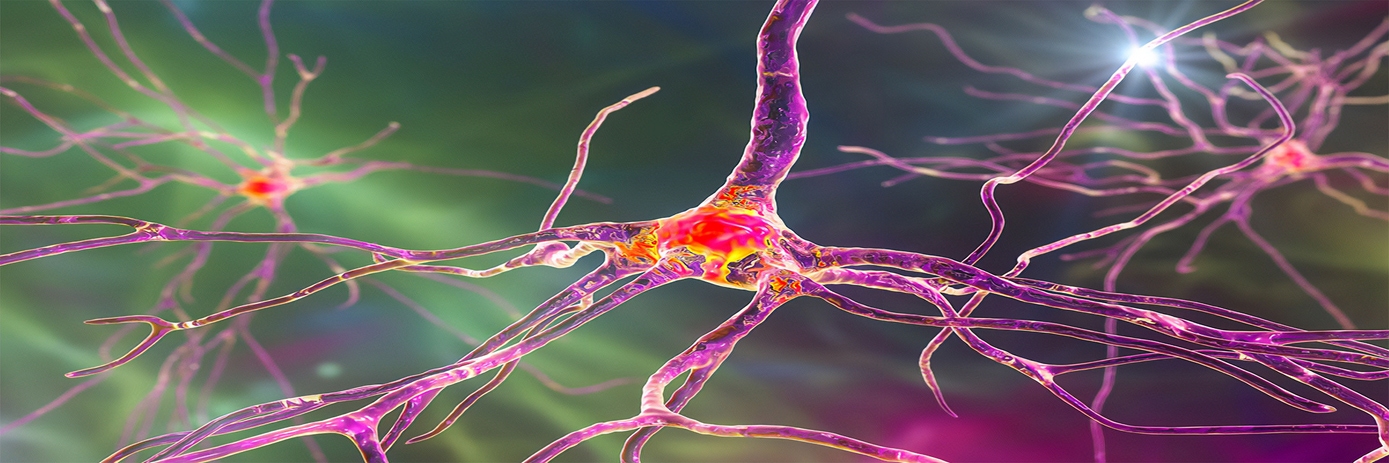One protein family that has been implicated in various neurological conditions is the nicotinic acetylcholine receptor (nAChR) family. These pentameric ligand-gated ion channel proteins are widely expressed in the central and peripheral nervous systems and are activated by the binding of acetylcholine (ACh).
nAChRs have been linked to Alzheimer’s and Parkinson’s disease, substance dependence, addiction, depression, and some immunological disorders. Deciphering the exact role of nAChRs in each of these conditions could therefore be useful to gain insight into disease pathology and open up possible avenues for therapeutic intervention.
To date, seventeen different nAChR subunits have been identified in mammals, including 10 α (α1–10), four β (β1–4), γ, δ, and ε subunits. Of these, some have been studied more extensively than others. For example, homomeric α7 and heteromeric α4β2 nAChRs are the most widely investigated subunits. They are expressed predominantly in the human brain and have been shown to contribute to the pathogenesis of neurological disorders such as Alzheimer’s disease and schizophrenia. Their expression has also been linked to nicotine addiction and nicotine-induced behaviors.
Further studies are now starting to delineate roles for other nAChRs subtypes. For example, the α9 subunit has been implicated in modulating the pathophysiology of neuropathic pain, while the α7 subunit has received attention in the areas of pain and inflammation due to its expression by non-neuronal cells of the immune system.
Tools to study nAChRs
Due to the vast diversity of nAChR subtypes, it can be challenging to elucidate the exact role and subcellular localization of particular nAChRs. To address this, a variety of toxins from algae, plants, and animals, which are known to inhibit the action of ACh at the receptor, have been used to target nAChRs. These naturally occurring antagonists are used extensively in research as a tool to explore the molecular mechanisms of ligand-binding at neuronal nAChR subtypes.
One such toxin is α-bungarotoxin, which is a 74 amino acid peptidyl toxin isolated from the venom of the banded krait snake, Bungarus multicinctus. When labeled with 125I, it can be used to quantify nAChRs. For example, radiolabeled α-bungarotoxin was used by researchers based at the University of California to investigate the effects of exposure to cigarette smoke constituents on nAChRs in adult and adolescent rodents.1 In another study, a collaborative team of researchers used radiolabeled α-bungarotoxin to explore the modulatory effects of a panel of flavonoids on the function of α7 nAChRs, with the aim to identify compounds with potential therapeutic properties.2
Therapeutic relevance of targeting nAChRs
The global burden of neurological disorders is continuing to rise and for many individuals affected, the outlook can be bleak. Many conditions remain incurable or lack disease-modifying therapeutics.
Because neurological diseases are also often highly heterogenous in nature, drug discovery ventures can be extremely challenging. Thus, breakthroughs are urgently needed to better understand the underlying pathophysiology of certain neurological disorders and identify suitable targets for drug discovery.
Given their potential roles in disease development and progression, nAChRs have become important therapeutic targets for neurological drug discovery endeavors. Due to the vast diversity of nAChR subtypes, radiolabeled α-bungarotoxin has become a useful experimental tool for studying the properties of nAChRs.
Read our recent literature review to discover more about the role of nAChRs in neurological diseases and potential tools to study them, such as α-bungarotoxin.
For research use only. Not for use in diagnostic procedures. The information provided above is solely for informational and research purposes only. Revvity assumes no liability or responsibility for any injuries, losses, or damages resulting from the use or misuse of the provided information, and Revvity assumes no liability for any outcomes resulting from the use or misuse of any recommendations. The information is provided on an "as is" basis without warranties of any kind. Users are responsible for determining the suitability of any recommendations for the user’s particular research. Any recommendations provided by Revvity should not be considered a substitute for a user’s own professional judgment.
References:
- Cano M, Reynaga D, Belluzzi J, Loughlin S, Leslie F. Chronic exposure to cigarette smoke extract upregulates nicotinic receptor binding in adult and adolescent rats. Neuropharmacology. 2020;181:108308.
- Shabbir W, Yang K, Sadek B, Oz M. Apigenin and Structurally Related Flavonoids Allosterically Potentiate the Function of Human α7-Nicotinic Acetylcholine Receptors Expressed in SH-EP1 Cells. Cells. 2021;10(5):1110.

































